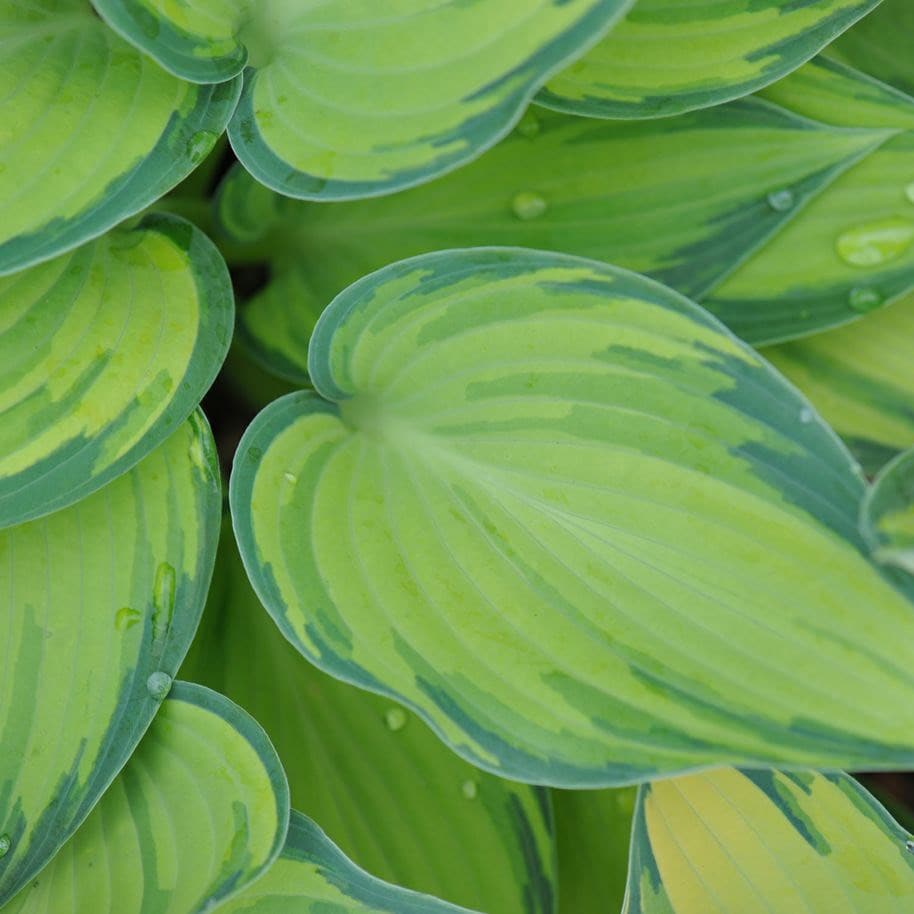Hosta (Tardiana Group) 'June'
plantain lily
This perennial dies back to below ground level each year in autumn, then fresh new growth appears again in spring.
- Position: partial or full shade
- Soil: fertile, moist, well-drained soil
- Rate of growth: average to fast-growing
- Flowering period: July to August
- Hardiness: fully hardy
This is a real showstopper. Its heart-shaped leaves are splashed with lime green and initially have a blue-grey wash, which gradually fades as the leaves mature throughout the summer. In July it produces spikes of lavender-grey trumpet-shaped flowers. It's a variegated sport of Hosta 'Halcyon' and makes a flourish at the front of a shady border, sheltered from cold, drying winds, or on its own in a container. The foliage is also invaluable for softening the edges of hard landscaping. Once established, its layers of leaves will suppress weeds, too. - Garden care: You'll get thicker, lusher leaves if you give your hostas a really good feed. An annual mulch in spring or autumn will help to keep the weeds down and is an easy way to improve soil and boost nutrient levels. Add a generous mulch of about 5-10cm (2-4in) deep of garden compost or leaf mould around the plant. Spraying the leaves regularly with a high nitrogen fertiliser during the growing season will also help to boost leaf size. Slugs and snails love hostas, so you will need to protect against them. Use an organic nematode treatment in early spring to ward off slugs. Or simply stick to a container.
Water your hostas well as soon as you plant them and from then on water regularly during their first growing season. Give them a water about once or twice a week around the base of the plant, avoiding the leaves. Little and often can be disastrous as it encourages the plant to produce roots closer to the surface in a desperate quest for moisture.

